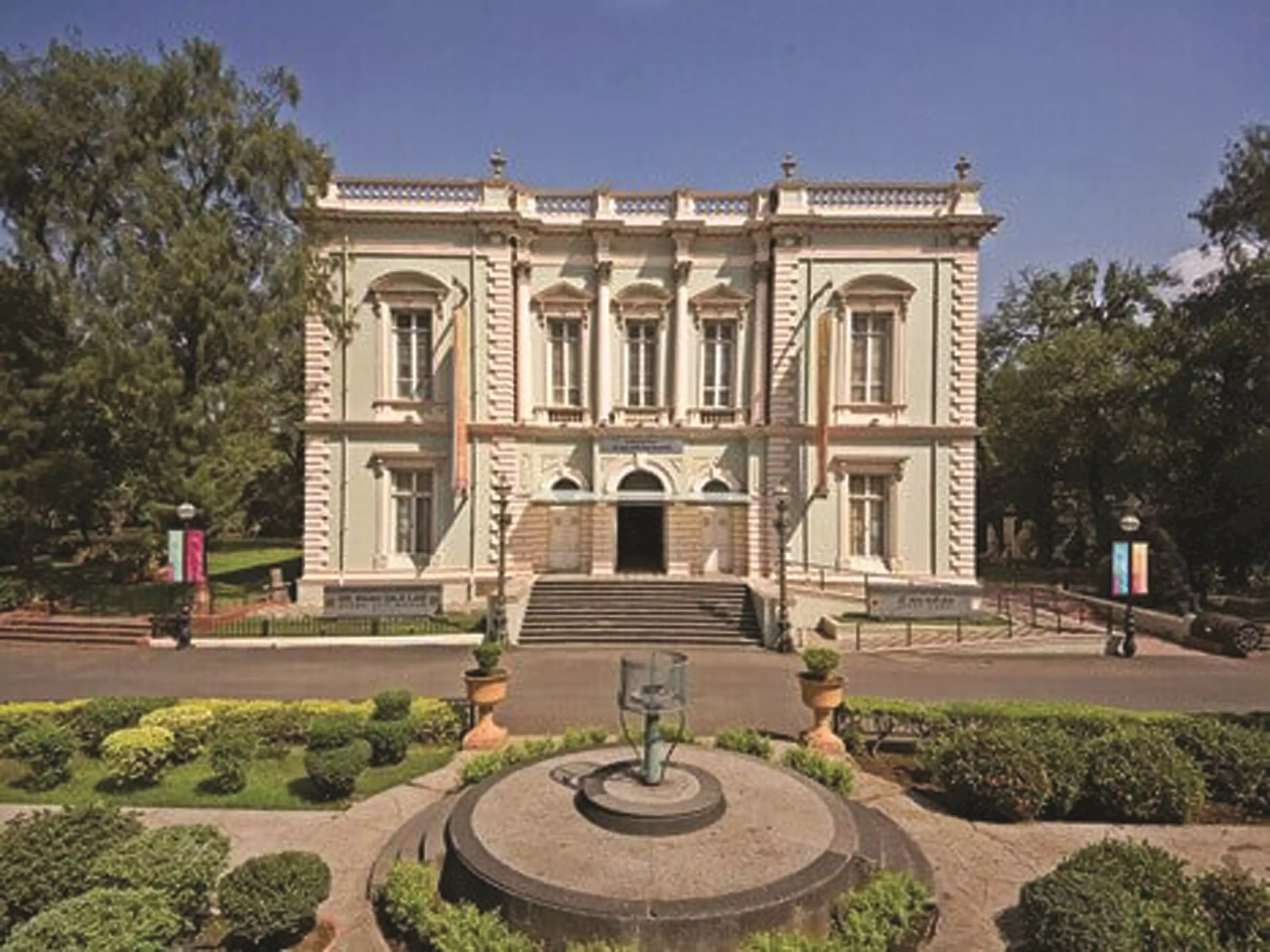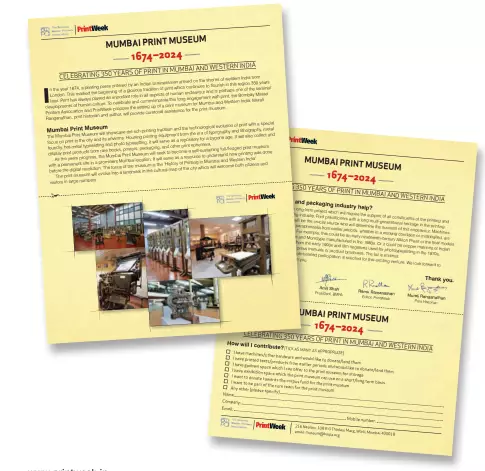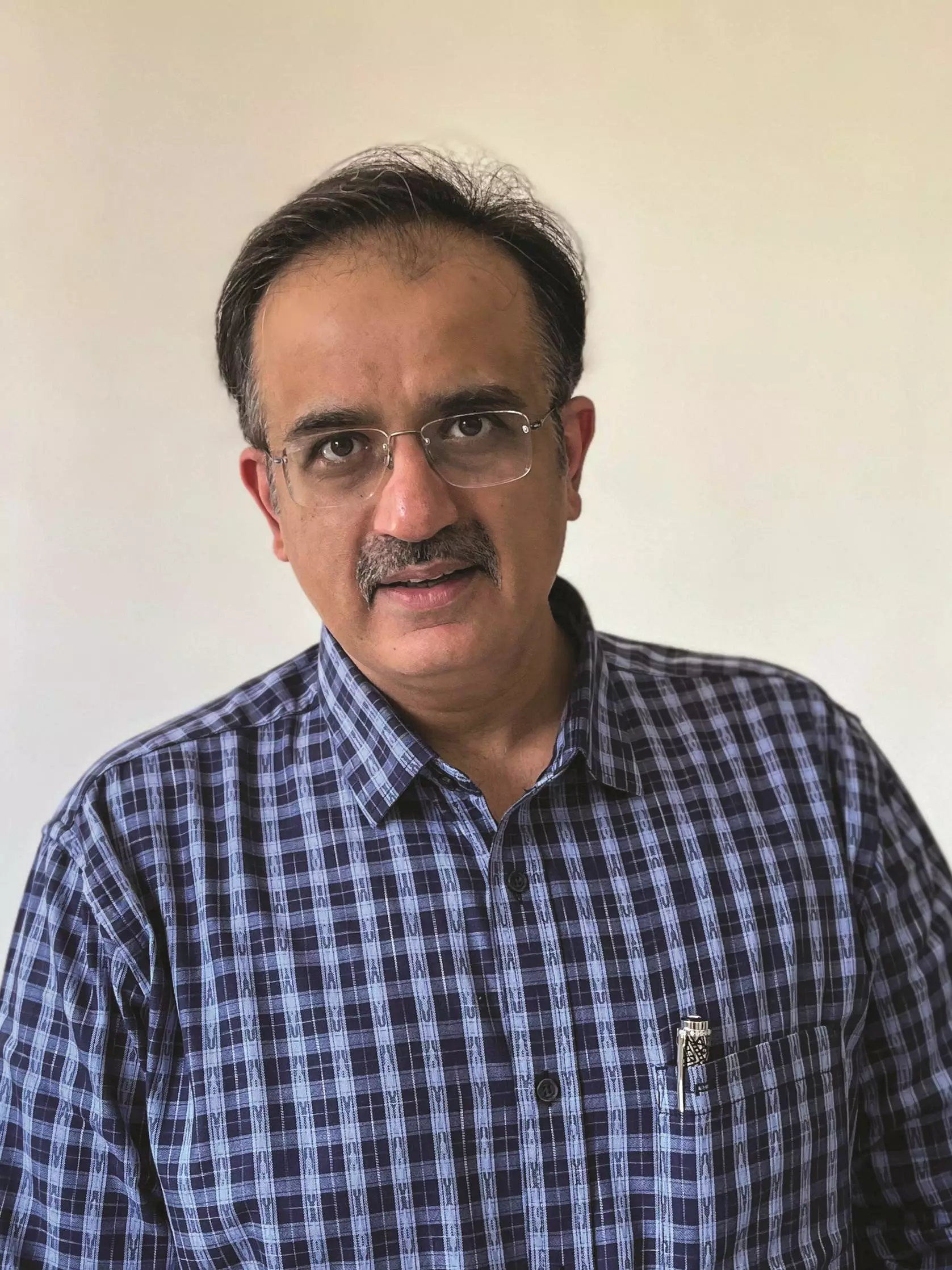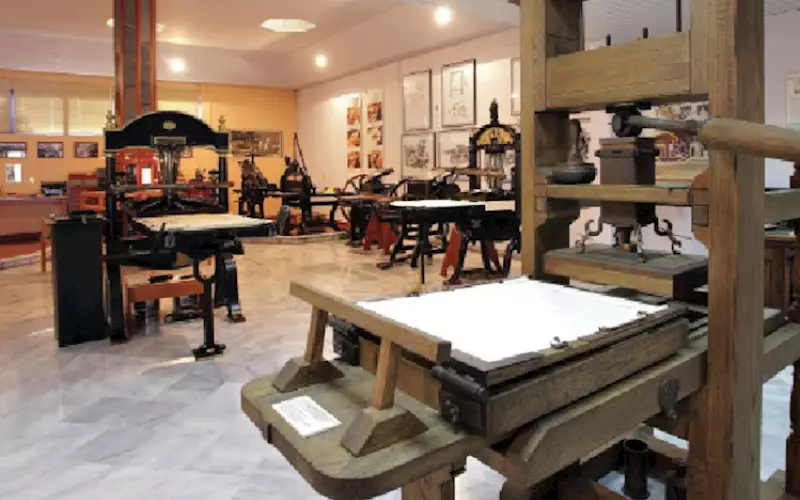Print History: Mumbai Print Museum - An Idea Whose Time Has Come
The proposal for a print museum for Mumbai was first mooted in 2021. From a tiny group of print enthusiasts, its supporters now include print industry leaders, prominent Mumbai citizens, and a leading print industry organisation. What are the next steps?
30 Jun 2023 | By Murali Ranganathan
Printing reached India in 1556 when a printing press intended for Jesuit missionaries in Ethiopia providentially reached Goa. For the next two centuries, printing had a precarious existence in India. Print began to make its presence felt in India only from the 1780s. The colonial cities of Bombay, Calcutta and Madras gradually emerged as print capitals. It took another fifty years for print to spread across the country. By the 1850s, a few other cities like Pune, Delhi, Lucknow and Ahmedabad had emerged as centres of print. At the end of the nineteenth century, India was one of the largest print markets in the world and it continues to retain that status in the 21st century. For the last two hundred years and more, print has permeated every aspect of life in India and this is a cause certainly worth commemorating and cherishing. And what better way to do it than via printing museums?
This idea to establish print museums across India was first floated in mid-2021. First to the print industry, and soon after, to the general public. Wherever it triggered a response, it was positive. The process to establish a museum, even under favourable circumstances, takes years. Building consensus among patrons, raising funds, identifying and acquiring the right location, obtaining government approvals and sanctions, inviting other organisations to partner with the museum, and innumerable unforeseeable roadblocks. For example, Mumbai’s first popular museum, now known as the Bhau Daji Lad Museum at Byculla, took nearly fifteen years from concept to inauguration.
Mumbai is a city with a print history going back 350 years. From the 1790s, Mumbai has been a print hub in India and with every passing year, it seems to have consolidated its position. A large number of printers in the city can trace back the print heritage in their family to three or more generations. Not surprisingly, the Mumbai Print Museum has found many supporters in the city.
How Mumbai got its first museum

In the 1850s, Mumbai was a city with no museums. It barely had any spaces for public education or entertainment. It was a city without gardens, at least gardens which its Indian residents could access. It had no public performance spaces except for a ramshackle theatre on Grant Road, located at a great distance from the walled city. The city still had its fortifications intact and its three access doors were still patrolled and closed for the night. The Esplanade, a vast open area around the fort walls, was out of bounds. There was hardly any space in the city to hold a public meeting except the Town Hall on the Bombay Green. The Town Hall also housed the Government Central Museum which was a repository for material excavated by amateur archaeologists and geologists and claimed by the Bombay Government.
But within a decade, the city had changed dramatically. Once the walls of the ancient fort were unceremoniously brought down, the city opened up. New neighbourhoods sprung up adjacent to the old city. Suburbs developed further afield in Byculla and Nagpada. And amazingly, not one but two museums and public spaces were dreamt into existence in the 1860s. How did it happen?
The prime movers of the proposed museum for the city were Dr Bhau Daji and Dr George Birdwood. Both of them were medical doctors with a thriving practice. And both of them were public-spirited individuals who played an active role in shaping the intellectual and cultural spaces in the city, especially those which Indians could access. They began laying the ground in early 1858. In a letter from that period, Dr Birdwood notes that:
"... having first ascertained by personal visits (chiefly in company with Mr Bhow Dajee, GGMC) to the leading members of the various Native communities of the Island, the unanimity of their desires to found an Economic Museum, and Natural History Gardens, on a scale worthy of Bombay, ... [we] issued printed invitations to 150 Native Gentlemen of mark to meet [at the Town Hall on the 23rd of November, 1858] to take into consideration the best means of carrying out their double project."
The grand project, soon christened the Victoria Museum and Gardens, still had a lot of ground to cover: selecting and acquiring an appropriate location, finding the funds to construct a building suitable for a grand city museum, and the curation of the museum itself. None of this could be done in isolation. Dr Bhau Daji and Dr. Birdwood found that they had to not only convince the government of the day about the usefulness of the project but also liaise with other cultural organisations which had similar ambitions. The Agri-Horticultural Society of Western India wanted to create a massive botanical garden worthy of the city while the Framjee Cowasjee Institute hoped to create a public space. The Framjee Cowasjee Institute was envisaged as a public space to rival the Town Hall. It would not only provide a performance and meeting space but also house a museum and a library.
This short preamble from 1858 was followed by years of planning, hundreds of letters to government and patrons, approvals and realignments and eventually the foundation stones for two institutions were laid in 1862. The Framjee Cowasjee Institute would be located at the best possible site then available in Bombay, at Dhobi Talao on the verge of the Esplanade with a clear line of sight for its impressive facade. The Victoria Museum and Gardens would be at Byculla and occupy a much larger area. Its joint secretaries, Dr Bhau Daji and Dr Birdwood, would continue to labour for another decade before the museum was finally inaugurated in 1872. For his untiring labour on this project, the museum was renamed in 1975 after Bhau Daji.
When he first heard of the museum proposal, the late Sharad Kale, a retired IAS officer was immediately enthused. Having been the Municipal Commissioner of Mumbai from 1991–95 and served as the chairman of the Bombay Port Trust during 1995–99, he had an intimate knowledge of the city and its history.
Mumbai has been the printing capital of India for the last 200 years and more. Printing technology has rapidly advanced and the earlier machines and their paraphernalia have become a part of the “printing heritage.” Recently, there has been a revived interest in building up museums in the city of Bombay. BMC has been at the forefront with rejuvenation of the Bhau Daji Lad Museum and the proposed Textile Museum. Similar new landmark museums are being set up by the Mumbai Police, Raj Bhavan and Films Division. Considering these developments, it is high time for setting up the Mumbai Print Museum.
Many captains of the print industry have been generous in lending their support to the initiative. Ramesh Kejriwal of Parksons Packaging believes that, “We can create an impact through the print museum to capture the heritage of printing evolution. It will be a great value for all of us and the future generations of the printing industry.” (See box overleaf for more details.)
The chief executive of ITC Packaging & Printing Business, S N Venkataraman, was equally enthusiastic about the Mumbai Print Museum:
A print museum to preserve artefacts and trace the path of so many pioneers and follow the evolution of printing technology in India would be an apt tribute to our graphic arts history and hopefully become a new landmark for the city of Mumbai.
The Bombay Master Printers Association (BMPA), a leading industry body representing a large number of printers in Mumbai and western India, has wholeheartedly endorsed the idea of the Mumbai Print Museum. The BMPA has formed a crack team to put the implementation of the museum on a fast track. Heading the efforts on behalf of the BMPA is Faheem Agboatwala of Hi-Tech Printing Services who has a broad vision for the Mumbai Print Museum.
The last thing we want do at the Mumbai Print Museum is to fill up a room with non-working machinery. Our endeavour is to showcase the history of print and why the printing press played such an important role in shaping the history of mankind.
Efforts are currently being made on numerous fronts. A multi-pronged outreach initiative is being made to mobilise the print fraternity. They are not only aware of the technology and processes which were once in use but are also best positioned to track down valuable print-related material and machinery which will form the core of any printing museum. The ground is being prepared to initiate and successfully complete a first round of fundraising for the Mumbai Print Museum.

Ramesh Kejriwal, chairman, Parksons Packaging

During my fifty-year career in print, I have seen the transition in print technology from manual typesetting, deep-etch printing plates prepared by exposing through positive films and printing on a single colour offset machine to print multi-colour images. Many of these things are unknown to print technologists who graduate today. I can barely imagine how print would have evolved over the last many hundreds of years, which is still unknown to many of the current printing fraternity and public in general.
We can create an impact through the print museum to capture the heritage of printing evolution. It will be a great value for all of us and the future generations of the printing industry. Print being a part of our day-to-day life, the proposed print museum will also enthuse the general masses and help them to understand the evolution of printing over the last many decades.
I fully endorse the idea of the Mumbai Print Museum which is proposed to be established in a prime location in the city. Since Mumbai serves as the hub for knowledge and tourism, the museum would be accessible to the printing fraternity as well as to the general public from India and abroad.
Faheem Agboatwala, Hi-Tech Printing Services
 The last thing we want to do at the Mumbai Print Museum is to fill up a room with non-working machinery. Our endeavour is to showcase the history of print and why the printing press played such an important role in shaping the history of mankind.
The last thing we want to do at the Mumbai Print Museum is to fill up a room with non-working machinery. Our endeavour is to showcase the history of print and why the printing press played such an important role in shaping the history of mankind.
Since the invention of the movable type played such an important role in shaping the future of print, it would be nice to showcase a model of the Gutenberg press. We intend to have a limited number of machines to show the important milestones in the development of print. A working letterpress or screen press can be installed where students can produce printed articles which can be sold at the museum shop; a live demonstration will enthuse schools to send their children as part of an educational visit. We will have a section which displays how paper is made; in this digital era, it would be interesting for the general visitor to know this.
We can have a section to demonstrate how the invention changed the course of history with a pictorial display. Print has a long history in Maharashtra and Mumbai and we intend documenting that too. We want to ensure this museum generates interest from both – a Mumbaikar as well as a tourist. For this, we will take the necessary help and support from experts in the field so that we can weave a story which people can enjoy whilst touring the museum. Our endeavour is to house the museum in a historic venue in a precinct which can regularly generate high footfalls.
Most importantly, efforts are being made to identify a suitable location for the museum. This requires the help of various government entities. It is hoped that the site will be within a tourist precinct and also associated with print heritage. The campus of the Government Institute of Print Technology opposite the World Heritage site of the Chhatrapati Shivaji Maharaj railway station is an obvious choice. The Municipal Press of the BrihanMumbai Municipal Corporation at Byculla is another strategic location. Simultaneously, steps are being taken to provide the legal framework for the Mumbai Print Museum either and register it as a trust or as not-for-profit company.
How can the print fraternity contribute to this venture? There are many ways for printers and printing companies to get involved with the Mumbai Print Museum. Besides contributing generously to the corpus fund for the Mumbai Print Museum, they could donate heritage printing presses and other hardware. They could offer godown space to the Mumbai Print Museum for storage of artefacts. If they can provide access to exhibition space which the print museum can use on a short/long term basis, it could be an initial location for the press. You could write to the organisers at this email address: museum@bmpa.org











 See All
See All